Metro will be the region’s transit planner, providing leadership for the transit map of the future.
The region’s public transit needs are great, 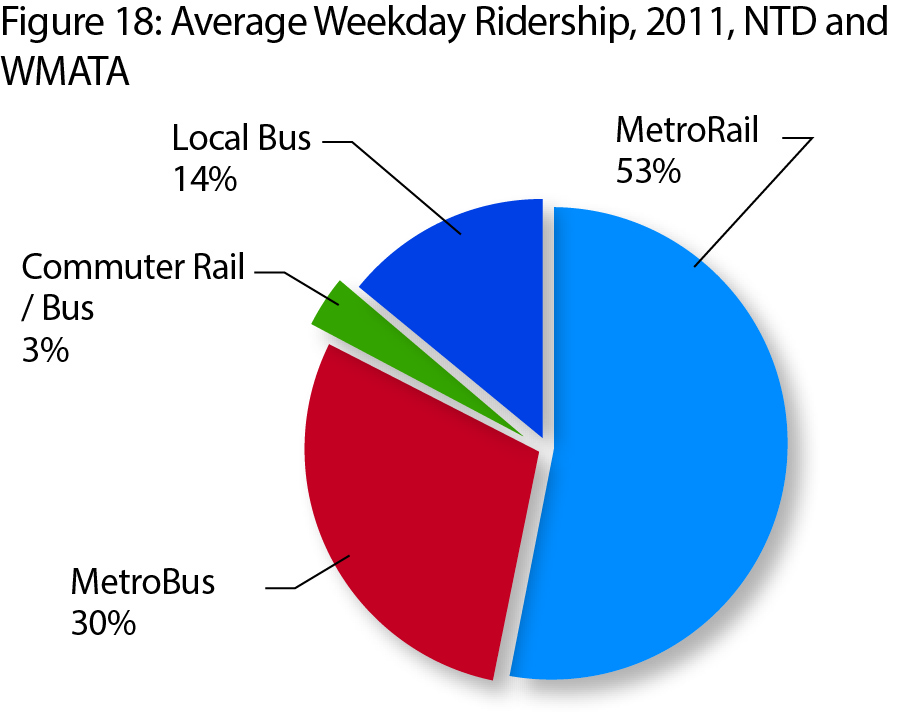 and the current multi-party approach has flaws that threaten the overall viability of the network. Metro is the only entity that is capable of and chartered to provide regional transit leadership.
and the current multi-party approach has flaws that threaten the overall viability of the network. Metro is the only entity that is capable of and chartered to provide regional transit leadership.
Metro has and will continue to make these and other investments, but it should be noted that jurisdictional partners will also have to do their part in order to ensure that these investments result in significant improvements. This means cooperating on mobility policies, coordinating on capital investments such as traffic signal prioritization, and making land use decisions that support transit usage and ridership gains, especially in areas where Metro has underutilized existing capacity.
Read more…
The National Capital Region Transportation Planning Board (TPB), the region’s Metropolitan Planning Organization (MPO), adopts the region’s constrained long-range plan (CLRP) annually. Only projects included in this regional transportation plan are eligible for federal funding, and since 1991, federal law requires the CLRP to be constrained financially. This regional transportation plan includes only projects that are reasonably expected to be fully funded.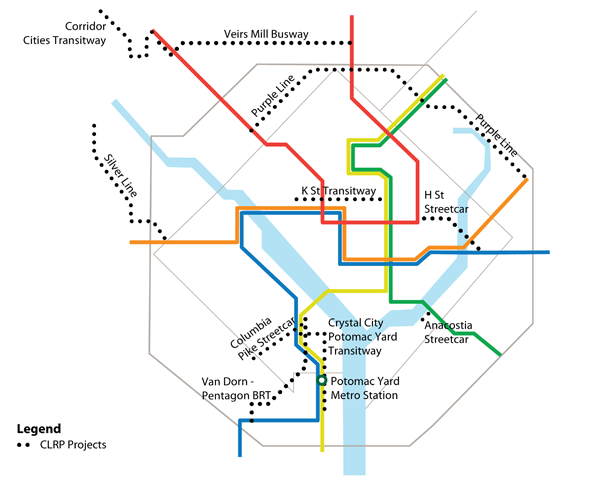
Read more…
Adding new Blue Line connections seeks to restore train frequencies to every six minutes during the peak period between Pentagon and Rosslyn stations, resulting in less waiting time and crowding for Blue Line riders in Northern Virginia. Once the Silver Line opens, the Blue Line service will operate every 12-14 minutes as opposed to the previous six minutes. The feasibility analysis is currently underway and has identified two potential alternatives to create new connections:
- Alternative 1: Add rail track that would create a new connection between the Blue and Orange/Silver Lines, or
- Alternative 2: A second Rosslyn Station for a new Blue Line with an underground passageway to the existing Rosslyn station, which would connect to the Orange/Silver Lines with a pedestrian tunnel.
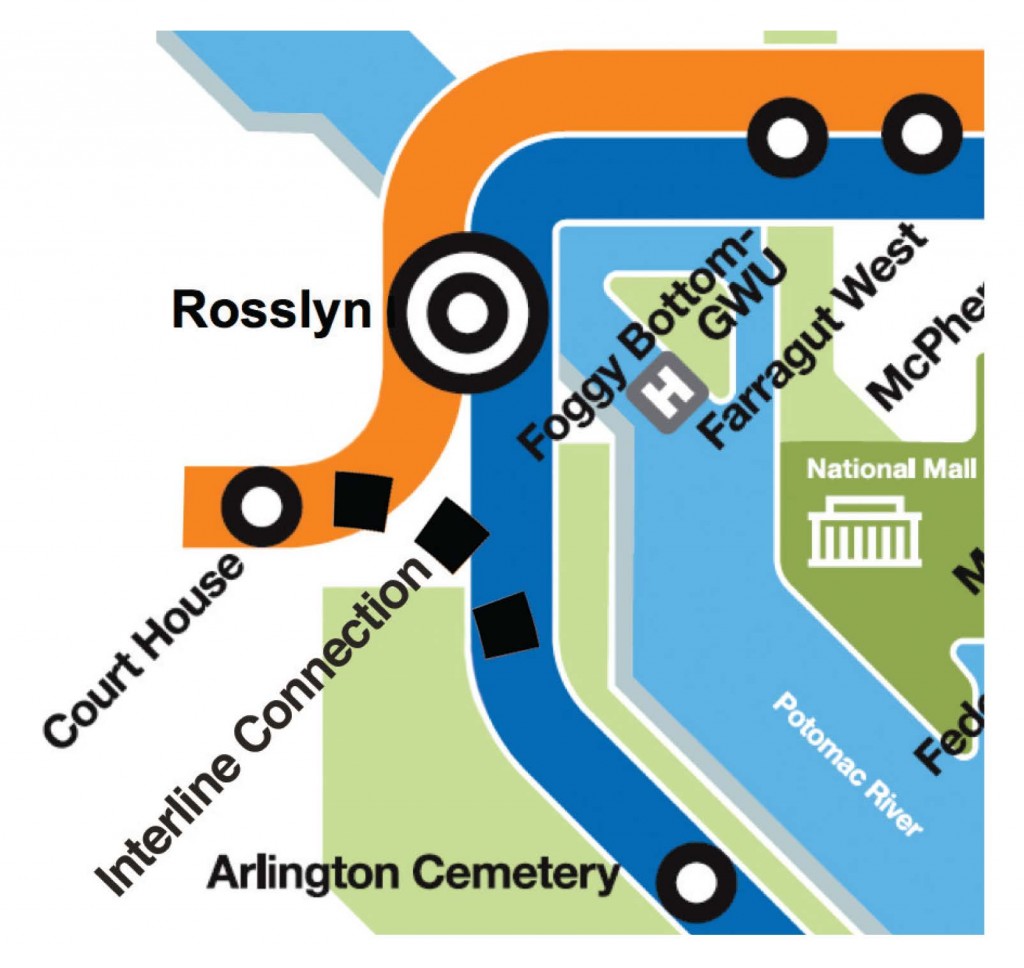
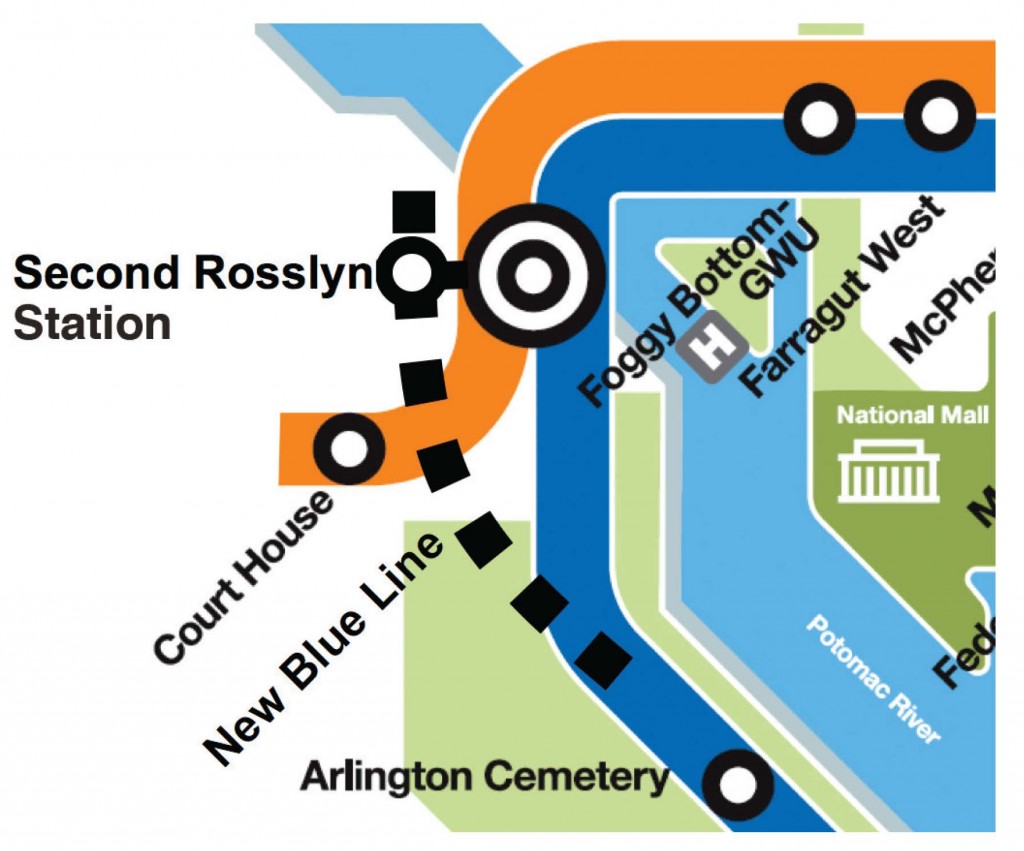
Read more…
Momentum requires Metro to reclaim its leadership role and to ensure that the region’s transit network meets the region’s needs. Metro’s Compact charges it with putting forth plans and mobility projects that enhance regional mobility and to be the champion for the regional rider. This means moving beyond the role of “convener” and mere “coordinator” and embracing the roles of “leader”, “collaborator”, and “co—author”.
Living up to this charge means leveraging the relationships with sister agencies Metro has already built by collaborating with partners from concept to execution. Metro will bring its partners in early to co-author mobility innovations, engage in joint problem-solving, and collaborate on bringing these projects online and into operation. As the lead transit planner, Metro will literally draw the region’s transit map and advocate for its implementation.
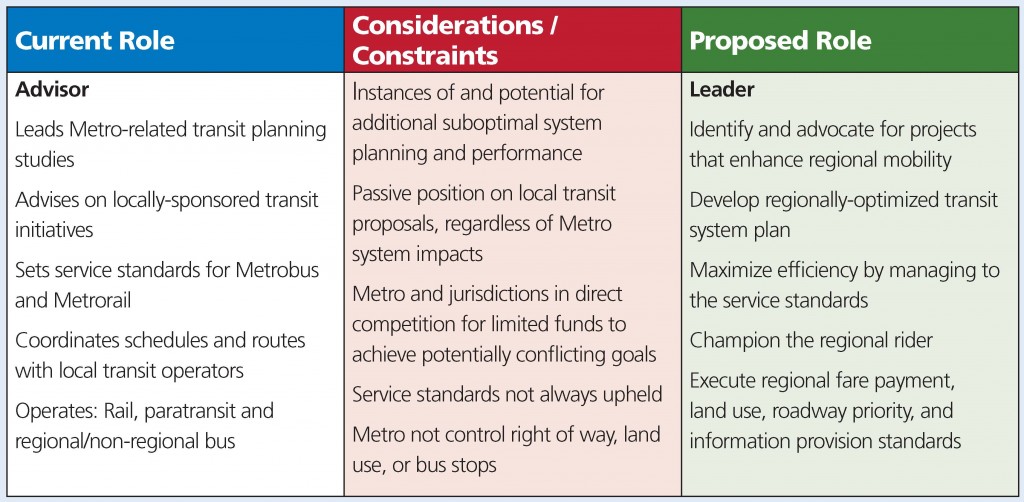
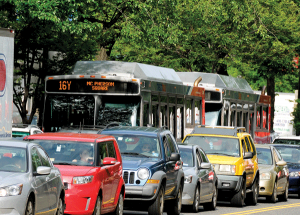 Strategic planning is the process of determining what an organization does, where it wants to be and how it plans to get there. Organizations with well-defined strategic plans have the distinct advantage of clarity of common direction. It offers discipline, focus, and results-orientation, enabling the entire enterprise to focus its talents and energies and to measure achievements against expectations and potential constraints. At Metro, it also provides leaders clear direction for prioritizing decisions around improvements, investments, expansion, operations, and maintenance.
Strategic planning is the process of determining what an organization does, where it wants to be and how it plans to get there. Organizations with well-defined strategic plans have the distinct advantage of clarity of common direction. It offers discipline, focus, and results-orientation, enabling the entire enterprise to focus its talents and energies and to measure achievements against expectations and potential constraints. At Metro, it also provides leaders clear direction for prioritizing decisions around improvements, investments, expansion, operations, and maintenance.
Metro needs a strategic plan for all of the above reasons and more. The organization is implementing hundreds of improvements to rehabilitate the system via MetroForward and instilling management discipline to the organization through the General Manager/CEO’s business plan. These efforts will have positive effects in the near term, but will be insufficient to prepare the system and organization for the challenges to come. Read more…
 You’ve been diligently telling us what you think our priorities should be and we’ve listened. We’ve been hard at work putting the final touches on Momentum: The Next Generation of Metro and Metro’s Board endorsed the plan today.
You’ve been diligently telling us what you think our priorities should be and we’ve listened. We’ve been hard at work putting the final touches on Momentum: The Next Generation of Metro and Metro’s Board endorsed the plan today.
Starting Monday, over the following 40 weekdays, we’ll be rolling out the most interesting parts of the plan in daily posts here on PlanItMetro.
Monday Posts: Preparing for Tomorrow’s Region Today
Tuesday Posts: Metro’s Importance to the Region
Wednesday Posts: Metro’s Recent Accomplishments and Public Engagement
Thursday Posts: Strategies and Priority Actions to Make this Vision a Reality
Friday Posts: Metro 2025 – Seven Priority Capital Initiatives
If you want to read and download either the full Momentum plan or the Executive Summary, go right ahead. But if you want to stop back for a daily dose of Momentum, don’t be shy. If you notice something that strikes your fancy, leave us a comment.
Regional support is important to making Momentum a reality! A number of regional stakeholders have already endorsed Momentum. Please sign on and add your name to endorse Momentum and send the message that public transit is vital to the National Capital Region.
Categories: Momentum Tags: 40 Days of Momentum, Board, business case, forecasts, history, maps, Metrorail, MindMixer, Momentum, planning, plans, priority, public comment
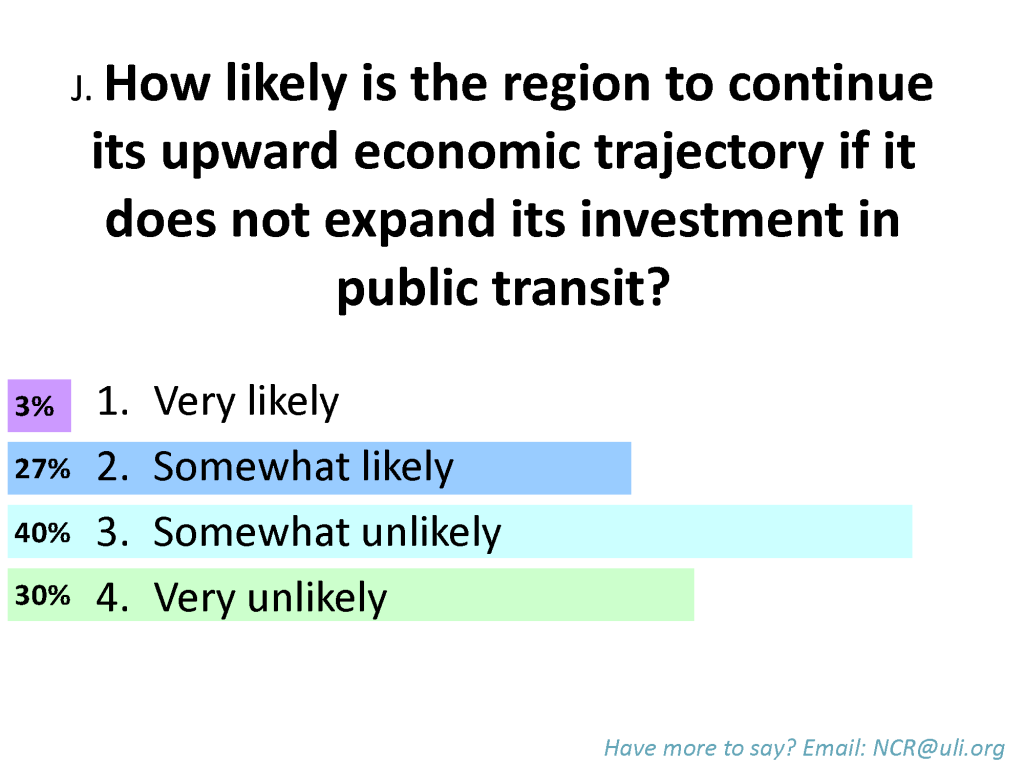
70% of the participants felt that expanded investment in public transit is key to continued economic growth in the Washington region.
Over the past decade there have been many significant efforts to promote regionalism in the National Capital region.Endeavors including Reality Check, COG’s Region Forward and the work of the 2030 group, have envisioned a region that is more accessible, prosperous, sustainable and livable.
Building on these plans and visions, on November 13th, ULI Washington hosted “Regional Leadership: Vision to Action,” an invitation-only event for the region’s leaders in business, land-use and real estate. The purpose of the event was to examine regional strategies for improving economic development and quality of life in the National Capital Region. A report summarizing the content of the event is being developed by ULI Washington and will be published in December 2012 at www.washington.uli.org. Read more…

Since Metro’s MindMixer site opened on September 27th, the response has been overwhelming. To date, we’ve had over 425 participants provide more than 1900 votes, 450 comments, and115 ideason a range of topics. The first round of questions generated over 150 pages of comments alone! The site is expected to continue through the end of the year at a minimum, so please continue to join the conversation.
Metro is using MindMixer to start a conversation with our customers about how they envision the next generation of Metro. A quick review of the site shows a wide range of comments and ideas, some that are short-term and many that are very far in the future.
All comments and ideas are being reviewed as part of Momentum: The Next Generation of Metro, the agency’s strategic plan. Metro staff is responding to some of the comments and ideas as they are posted. Often this is to direct a participant to work that is already underway or to provide short responses or explanations of current policies. Other ideas have created discussions between participants, which is one of the main purposes for the site. The vast majority of ideas and comments require further study, more discussion of what is possible within Metro’s environment, and/or prioritization among other needs at Metro. Many of the ideas also require substantial resources to implement.
As the site continues, we are collating and summarizing your comments and ideas based on themes, such as core capacity, information provision, and non-Metro expansion. This high level summary will be used to support Momentum, our strategic plan, as it provides an indication of the elements that are most important to you, our riders. We will also be taking comments directly from MindMixer to incorporate in the strategic plan document. As part of this blog, we will be further developing some of the ideas and comments to form the basis for a Metro 101 section on PlanItMetro. These posts will help increase the level of understanding of transit in this region. Lastly, for those ideas that require further study, they will be compiled and when MindMixer concludes, this information will be circulated to the respective Metro departments. This will help ensure that decision makers throughout the organization review the thoughtful ideas that have been provided on MindMixer.
Categories: Momentum Tags: 101, Board, Metro 101, MindMixer, Momentum, planning, plans, priority, public comment, studies, survey

The first round of MindMixer questions for Momentum: The Next Generation of Metro closed on October 26th. 370 people joined the conversation and posted over 90 ideas, 300 comments, and 1,600 votes. There were 4,300 visits to the site, of which 63% were unique visits. There were almost 24,000 page views and visitors stayed on the site for an average of five and a half minutes. The response was terrific and we’re excited to continue the conversation and new questions are currently on the site.
Who Commented
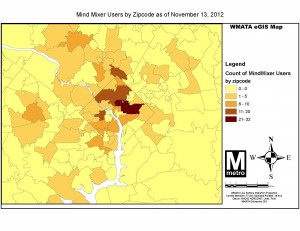
Mind Mixer responses by zipcode. Click for larger version.
Your fellow Metro riders who joined the conversation came from across the region.Below is a map of the number of participants by zip code.Participants ranged from 18 to over 65, with an average age of 36.5. 70% of participants were men.As our ridership is much more evenly split, we’d love to hear from more women, so please don’t be shy!Guys – please tell your female colleagues, friends, and family about the site and encourage them to comment.This month we are advertising on buses and in multiple English and non-English newspapers to further engage our riders, so keep an eye out.
What We Heard
We have compiled a summary of the vote tally from each first round question, as well as a summary of the themes of the comments within each question. The major takeaways for Metro were that our riders have a lot of interesting, creative ideas for small, short-term improvements to their daily ride, many of which could be inexpensive. Additionally, there is a desire for large infrastructure projects to expand the system, connect communities, and increase the capacity in the system core. We also noticed a need for a Metro 101 to better explain the basics of how Metro operates, as well as the pros and cons of ideas and concepts. Stay tuned to PlanItMetro for posts tagged as Metro 101.
Overall, the major themes we heard were:
- Safety—repair and relieve crowding
- Address core crowding first
- More train frequency
- Bus priority
- Station entrances; faregates
- More information
- Integrate and connect other services, communities
- Funding—long-term source
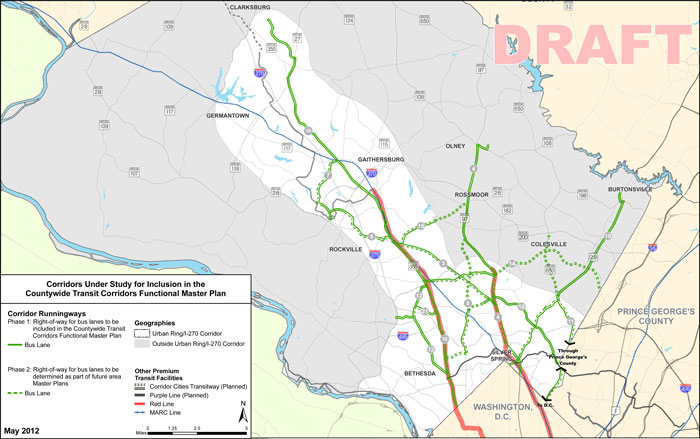
Countywide Master Plan Transit Corridors.(Click for larger size.)
While Metro works to bring the transit system back up to a state of good repair as well as looking to the future of Metro, we continue to work with our jurisdictional partners on various transit studies and projects to expand the region’s transit system. In Montgomery County, since 2008 much of the transit expansion planning has focused on developing a countywide Bus Rapid Transit (BRT) system, most recently through the recommendations of the county’s Transit Task Force earlier this year.
Seeking to take another step towards defining the county’s transit future, the Montgomery County Planning Department is holding a series of public meetings in the coming days to hear from the public on an update of the county’s master plan to consider how BRT might be incorporated within the transportation corridors under study. Above is a map of the proposed corridors under review.
You can find Montgomery County planning staff’s recommendations online (22MB pdf).
 and the current multi-party approach has flaws that threaten the overall viability of the network. Metro is the only entity that is capable of and chartered to provide regional transit leadership.
and the current multi-party approach has flaws that threaten the overall viability of the network. Metro is the only entity that is capable of and chartered to provide regional transit leadership.












Recent Comments